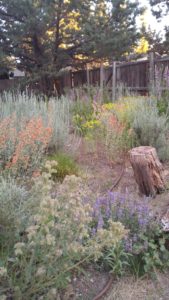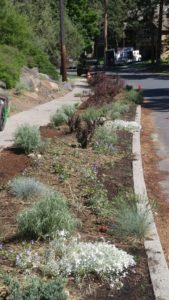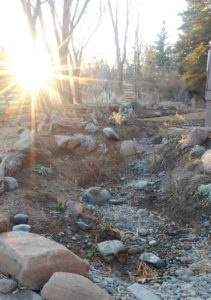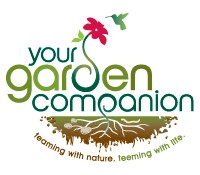Thank you clients! We value the opportunity to work on your landscapes to restore life that depends on local habitat and a commitment to sustainability. We enjoyed working side by side with you as a Companion, Advising and teaching you as Consultant or working for you with our Gardening Crew maintaining your landscape beds and or vegetables.
As you know we do not mow, we do not use blowers nor do we come and go too quickly. We do the opposite. We strive for long term relationships between you, your land and the onsite ecology. We make close observations, we take the long term approach and use science and best practices to do our work.
In 2018, we look forward to another year modeling a truly sustainable approach that is committed to balancing the needs of the environment, with high social standards and economic viability.
Highlights of 2017!
Increased Sustainability

In 2017, Your Garden Companion restored hundreds of native plants to our Central Oregon landscape. This added greater biodiversity and habitat for pollinators. Once pollinated, the seeds fed the finches and juncos during the fall and winter. The birds helped spread the seeds. By building the food chain from the ground up, the ecosystems sustain themselves.
The more diversity in the landscape, the more resilience to overcome the weaknesses of disease, drought, pests, etc. Resilient landscapes function like a good business team that is built on the diverse skills of many different individuals. Below are a few of our 2017 projects.
Used Cover Crops in the Landscape
The bed on the left in Northwest Bend was slowly converted over several years from a flower bed with difficult to manage weedy wide open spaces. Deer had over eaten the plants and much time was needed to maintain it. With additional plantings, deer protection and two flowering cover crops, the open weedy areas were replaced with color and habitat. The cover crops were weed whacked in the fall to act as a mulch that will continue to feed the soil this spring. There will be no additional expenses for compost or fertilizer.


Conserved Water through Sod Removal
Once the sod on the left image was removed, we converted to a drip irrigation system, then replanted with local native plants that will require less water on the landscape.

Property in Northwest Crossing in Bend, OR


Captured Rainwater
from downspouts and other impermeable surfaces were funneled into rain-fed garden beds, our newest approach to sustainable gardening.

Planted in the fall of 2017.

